The Mysteries of the Lake District
Delving into the Lake District’s Mystery; Fells, Fairies and Folklore
With tales of supernatural sightings, magic and rich history tied to its enchanting landscapes, the Lake District is a UK destination like no other. Read on to learn about the mystery behind Cumbria’s incredible National Park.
Set in the heart of Cumbria, the Lake District is an amalgamation of the old counties of Cumberland and Westmorland. However, what makes the breathtaking corners of the Lake District unique is their air of mystery and magic. The National Park is steeped in history, myth and legend which originates from the ancient Celtic kingdom, Roman and Viking invasions as well as the influences of the poets and literary giants. The vast, captivating lands of the Lake District are said to be home to some of the most intriguing tales, from the legend of the Bassenthwaite Eachy to the fairy castle of Castle Howe Hill Fort.
Fairies and Mysterious Creatures
The Bassenthwaite Eachy
The tale of the Lochness Monster is known around the globe, but have you heard of the Bassenthwaite Eachy?
Hidden in the murky depths of Bassenthwaite Lake, there is said to be a mysterious creature dating back to 1973 which was earlier spotted in Windermere in 1873. This slimy amphibious “Eachy” has supposedly been sighted several times since, diving in Bassenthwaite Lake and moving at incredible speed. If you keep your eyes on the lake from Armathwaite Hall Hotel and Spa, you might just catch a glimpse during your stay…
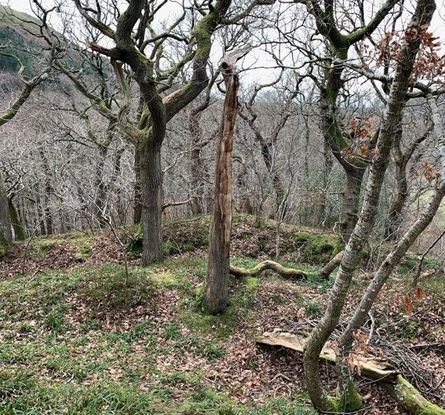
Castle Howe Hillfort
Adjacent to Armathwaite Hall Hotel and Spa on the shores of Bassenthwaite Lake stands the ancient remains of Castle Howe Hillfort. Dating back to the Iron Age, the Castle is a listed ancient monument perched on the rocky outcrop, which would once have offered a natural defence from invaders.
Aside from its archaeological importance, the Castle also has a magical reputation as a fairy castle with mentions of sightings followed by mysterious figures being identified before disappearing!
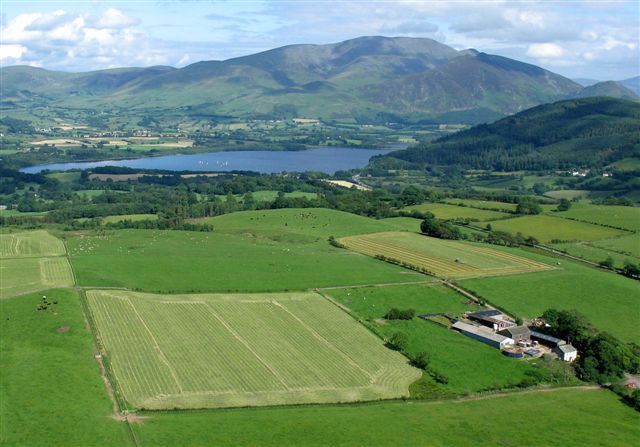
Elva Hill Stone Circle
Sitting on the southern slope of Elva Hill, Elva Hill Stone Circle is one of the lesser-known Neolithic stone circles and although no longer complete with only half of the original 30 stones remaining, it’s nonetheless an impressive spectacle, standing at a diameter of 125ft.
Accessed via a public footpath at Elva Farm, the hill itself is reputed to be a fairy hill and according to some, a secret gateway into the otherworld, only open at certain times of the year. The name of the hill is said to originate from the Viking name for the place of the Elves. The circle was also thought to have been associated with the trade of tools and the stone aged flints found around the site were thought to be ‘elf arrows’ crafted by the fairies, often used as powerful magical charms.
Photography Credit – Simon Ledingham
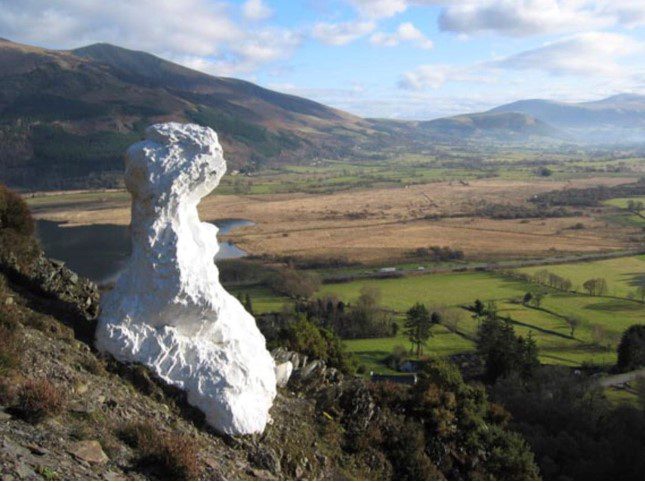
Local Legend
The Bishop of Barf, White Horse of Barf, Thornthwaite
Barf shoulders onto Lord’s Seat overlooking Bassenthwaite Lake and is featured as one of the fell walks in Alfred Wainwright’s Pictorial Guide to the Lakeland Fells. Situated 700ft on the eastern side of Barf and identifiable from the village of Thornthwaite just off the A66 running between Keswick and Cockermouth is the famous white monument The Bishop of Barf.
According to local legend, the white-painted stone marks the spot where the Bishop of Derry, now Londonderry, was killed falling from his horse in 1783, after drunkenly betting he could ride up the hill to the summit of Lord’s Seat. Both the Bishop and his horse are rumoured to be buried near a smaller stone, the Bishop’s Clerk, at the base of the hill. The stone which is 7ft tall was painted each year by either a member of the public in exchange for a pint or by the staff of the nearby Swan Hotel until it was converted into apartments; today, painting is carried out by the Keswick Mountain Rescue.
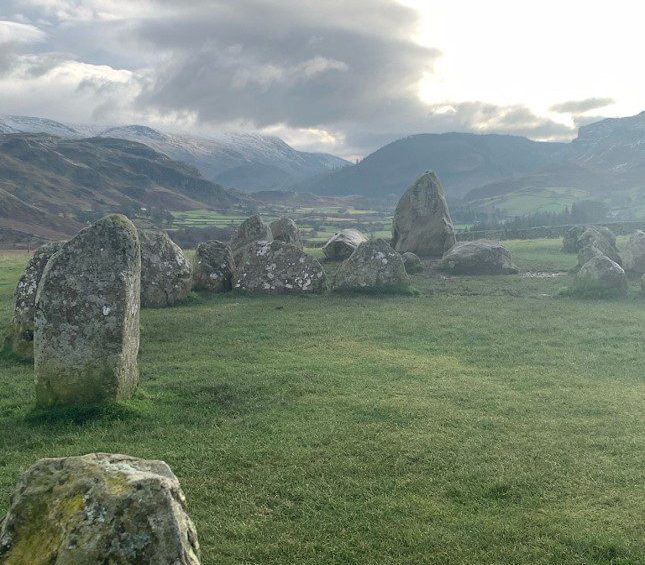
Castlerigg Stone Circle
There are several stone circles in Cumbria, however, Castlerigg is arguably the most famous. This atmospheric Neolithic henge is dramatically located high above Keswick and overshadowed by the majesty of Skiddaw Mountain dating back to around 5000 years. The henge is virtually complete, comprising of 38 unworked stones of varying heights and sizes, with an internal rectangular structure. Some say the stones have been placed to mimic the mountains that surround them and the stunning location of the henge offers almost 360 degrees of Lake District views without comparison for those that visit.
From the Poets
The Bridal of Triermain – Sir Walter Scott
Around eight miles southeast of Bassenthwaite Lake and some three miles north of the mountain Helvellyn close to Watson’s Dodd, the rocky outcrop the Castle Rock of Triermain can be found. When first seen from a distance, you could be forgiven for mistaking it for an ancient ruined castle; this striking appearance, along with Sir Walter Scott’s 1813 epic Arthurian poem The Bridal of Triermain, form the site’s namesake. The poem tells the story of King Arthur encountering a group of fairies at the crag, while Gyneth, his daughter by the half-fairy Gwendolen, was sent into an enchanted sleep by Merlin as punishment for her cruelty until she was eventually awakened by Sir Roland de Vaux.
Long Meg and Her Daughters
Occupying a hillside near the village of Little Salkeld, near Penrith, Long Meg and Her Daughters dates back to the Bronze Age and is the third-largest stone circle in England. The monument is elliptical in shape measuring 300ft by 360ft and consists of 58 large granite stones plus a 12ft red sandstone decorated with carved spirals known as Meg.
The circle was said to be used for rituals associated with the changing of the seasons and is steeped in local folklore with legends stating that the stones were once a coven of witches led by Meg of Meldon found celebrating on the sabbath and were turned to stone by a magician or saint.
William Wordsworth found the monument a source of inspiration and wrote of it following a visit in 1822: ‘A weight of awe, not easy to be bourne, Fell suddenly upon my spirit – cast, From the dread bosom of the unknown past, When first I saw that family forlorn…’
Airey-Force Valley – William Wordsworth
Aira Force is probably one of the most famous waterfalls in the Lake District if not in England. Set within a beautiful Victorian landscaped arboretum built by the Howard family of Greystoke Castle in the 1780s, with half a million native and ornamental trees from around the world including a Sitka Spruce which now stands 118 feet high. The site now is looked after by the National Trust; the main force falls around 70 feet from below a stone footbridge and cascades downstream until joining Ullswater.
After a short walk along this part of Ullswater, William Wordsworth was inspired to write his most famous and evocative poem ‘Daffodils’ in 1804 after seeing the flowers in all their glory during a stormy day. Taken aback by the beauty of his surroundings, William Wordsworth also wrote short lyrics composed in September 1836 entitled Airey-Force Valley.
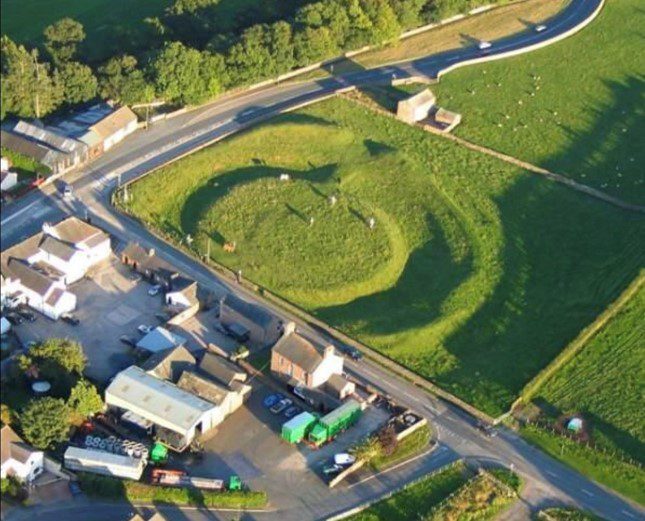
Lake District History
King Arthur’s Round Table
Despite the name of this iconic henge, which evokes the mythical King Arthur, this iconic monument is in fact a historical landmark located at Eamont Bridge just outside of Penrith. The structure is a prehistoric circular earthwork surrounded by a ditch and an outer bank close to the rivers of Lowther and Eamont. Dating back to Neolithic era around 2000 BC and measuring 90 meters in diameter, the monument has suffered much alteration due to the construction of the nearby roads and in the 19th century when the landlord of a local pub set up a tea garden in the inner circle of the henge. A smaller henge called the Little Round Table stood 75 meters to the south but was destroyed in the 19th century. It is also believed that there is a connection to the nearby Mayburgh Henge which stands 400 yards away.
King Edward I Monument, Burgh by Sands
At the end of the River Eden at the Solway Firth, a grand sandstone monument was erected to mark the death site of Edward I, the ‘Hammer of the Scots’. Edward initiated the Hundred Year War against France and also acted as one of the prime architects of the three hundred years of almost continuous warfare with Scotland. Edward died on the edge of the Solway on 7th July 1307 on his way north for the last assault on Scotland.
Viking History
The Norse settled in the Lake District after moving over from Ireland and Scotland during the 8th century. Their influence can be seen all over the Lake District in the form of monuments but most notably in language and place name. For instance, the ‘Thwaite’ found in Lake District locations from Bassenthwaite to Satterthwaite is originally from the Norse word for clearing and names ending in ‘by such as Ireby.
Roman History
Julius Caesar landed twice in Britain in 55BC and 54BC, but the lasting occupation started in 43AD. During Roman rule, the northwest was primarily a military region with a complex of roads and defences. A key factor to control the area was the fort or mile fort, built at regular intervals along the main roads. Roman roads were famously built in straight lines and as direct as possible; many of these roads are still used today such as sections of the A595 Cockermouth to Carlisle, Harknott Pass from Ravenglass to Ambleside and the military road B6318 from Carlisle to Newcastle which follows Hadrian’s Wall and runs parallel to A69.
Hadrian’s Wall
Hadrian’s Wall is one of the most visited tourist attractions in the whole of the UK. It stretches the width of the country from Bowness-on-Solway close to Carlisle to Wallsend-on-Tyne on the east coast. Construction by Emperor Hadrian (76-138 AD) started around 122 AD as a defence against the Pictish tribes of Scotland and marks the northern boundary of the Roman Empire. Milecastles and garrisons along the wall can be seen with many now open to the public including Vindolanda, Housesteads and Chesters Roman Fort, all locations well worth a visit. Roman forts can be found throughout Cumbria including Ambleside, HardKnott, Ravenglass and Wigton.
Bowness-on-Solway
At the western end of Hadrian’s Wall Bowness on Solway was the location of the Roman Fort of Maia, which guarded the approach from the Solway. The village is built on the site of the fort and Roman stones can be seen in the local buildings, including the Norman church of St. Michael. Bowness-on-Solway sits within the Solway Coast Area of Outstanding Natural Beauty (AONB) and is home to nationally and internationally important species. The Hadrian’s Wall Path National Path with 84 miles of glorious coastal, moorland, rolling fields and cityscapes such as Carlisle and Newcastle, start (or end) here. Just outside the village are the remains of a long lost railway line; in 1869, the Solway Junction Railway opened a one-mile viaduct crossing the Solway firth between Bowness and Annan in Scotland. Unfortunately, it was dismantled in 1934 due to damage.
Offering so many beautiful corners to explore and so much mystery to uncover, the Lake District has maintained its reputation as one of the most captivating locations to visit within the UK. Which one of our region’s historical or mythical sites will you explore first?
